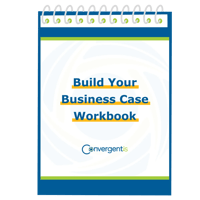Regardless of what industry your team is operating in, it is not uncommon to find details of your procurement activities spread out over multiple systems and data sources. This is a common concern, and can result from business growth, mergers and acquisitions, or point solutions implemented over time to address symptoms of larger procurement problems. This lack of consolidation can result in late or incorrect payments and put increased pressure on team members to invest additional hours of manual effort to ensure all procurement documents reconcile and budgets are being maintained.
No matter how these challenges arise, the impacts of a fragmented ERP environment will only compound if not addressed, hindering strategic decision making, cross-functional efficiencies and cost savings from procurement activities. Therefore, if your business is currently switching between paper, spreadsheets, SAP ECC, SAP S/4HANA, and other ERP systems, there is more you can and should be doing to enable the success of your organizational priorities.
Businesses that can combine information for strategic insights are often the ones that succeed in proving their direct impact on profitability and further are able to respond to the global market with agility. This blog post provides a roadmap with careful reasoning for your team to create and achieve the benefits of a single view of procurement.
What is a Single View of Spend?
A single-view of spend in the procurement setting can often be achieved with a portal. Portals are commonly used to combine information across data sources, separate relevant information from background noise, and tell a story for your business and where it is headed. An effectively set up dashboard should bring to your team’s attention what data needs to be scrutinized and what trend may be arising.
The major benefit for organizations to implement a solution that achieves a single view of spend comes down to cost. Good talent is costly, meaning their time is of the utmost value. Since business executives and other decision-makers don't have a lot of it, it becomes essential to provide team members with tools that make the best use of the limited resource by granting them visual access to real-time performance metrics.
Leveraging a Procurement Portal That Really Works
After recognizing a procurement dashboard as essential to your strategy, your team will need to consider how you will create a single view of spend that results in a hard return on investment (ROI). Here are four steps to help your team achieve this.
1. INVEST IN A SOLUTION THAT MAKES THE PROCESS EASY
Rather than starting from scratch and building your data backend from the ground up (an unrealistic option), organizations can look to a solution that integrates seamlessly with multiple ERP vendors. Making this investment not only helps to bridge ERP gaps but represents a crucial step in strategic alignment. With the right tool, fewer workflow disruptions will occur as business entities come together into a single view of spend.
2. TRULY UNDERSTAND YOUR BUSINESS
Although it might seem commonplace, many dashboards have failed in the past due to their lack of understanding of how their organization works. A successful procurement strategy must take into consideration a broad view of not just your procurement processes but also the organization as a whole. Ask questions such as what success looks like for your organization and how is my department helping achieve these metrics?
By doing so, you can understand what data requires surfacing and how it plays into the bigger picture. Only by doing so will your efforts in procurement become a business enabler and impact organizational change.
3. Determine Metrics for Success
With a clear picture of success on an organizational level, consider what metrics or key performance indicators (KPIs) are relevant to supporting this mission. Often, this requires breaking down your organization's performance, core purposes or functions. Gathering relevant data can help your team explain different trends, opportunities, or actions, resulting in quick response times to changing market conditions.
These areas identified should become highlights in your dashboard, equipping your team to better communicate their impact on the organization's bottom line.
4. CREATE VISUALS AND ALERTS THAT HELP YOU KEEP YOUR TEAM ON TRACK
Having a single view of spend also means having an easy view of suppliers. A common mistake procurement teams make when designing their dashboard is using operationally minded people rather than their end-users. As a result, dashboards then contain:
-
Too much or not the right data
-
Graphs that don't tell a full story
To ensure that data is being presented in a usable way, ensure that you are creating for maximum communication and impact. Therefore, colours, icons, and the amount of text displayed should be helpful rather than hindering.
ConvergentIS Rapid Vendor Portal
Further simplifying this process, our team has developed a rapid vendor portal solution that combines data from SAP ECC, S/4HANA and other mixed business systems and custom proprietary systems through SAP Business Technology Platform Integration Connectors. In addition to combining systems into a single view, our team leverages SAP Work Zone to create an experience that showcases the most relevant data for businesses, so business leaders can make the best use of their time.
To learn more about the business benefit of implementing a single view of spend, download our free Build Your Business Case workbook.


